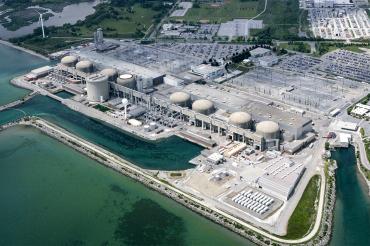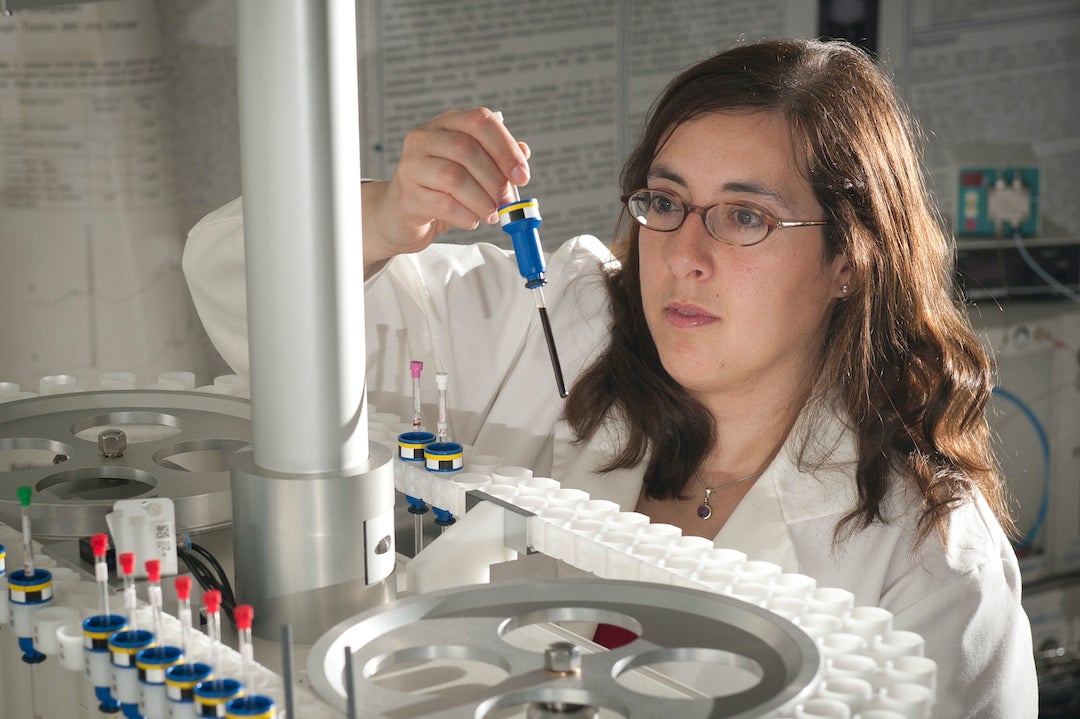Researchers to study whether metal-corroding microbes can grow in Canada’s proposed nuclear waste facility

Published: June 8, 2022
With Canada getting closer to moving all its spent nuclear fuel to a single facility, and encasing each fuel container in bentonite clay, researchers are studying whether that clay could support microbial life – which could eat away at the metal containers.
“I've found that microbial life always surprises us,” says Myrna Simpson, one of the researchers and a professor in University of Toronto Scarborough’s department of physical and environmental sciences. “Microbes will grow in the strangest places.”
The proposed storage facility, called a deep geological repository (DGR), would sit 500 to 800 metres underground in one of two Ontario sites. Every room storing nuclear waste will be packed and sealed with bentonite clay, a swelling material that helps dissipate heat and reduces water movement when packed tightly.
But the clay is mined from a natural deposit in Wyoming and will inevitably arrive embedded with tiny bits of organic matter. Microbes will also be in the clay and rock surrounding the facility, and in groundwater that may pass through it. Some of that microbial life may produce sulfide, a chemical compound that could lead to corrosion of the metal containers holding the used fuel.

Myrna Simpson is a Tier 1 Canada Research Chair in Integrative Molecular Biogeochemistry and works out of the Simpson Lab at U of T Scarborough (photo by Ken Jones)
To test if the microbes can grow, the group building Canada’s DGR, the Nuclear Waste Management Organization (NWMO), brought together Simpson and professors Josh Neufeld and Greg Slater from the University of Waterloo and McMaster University, respectively. Their five-year study was recently awarded $2.8 million in funding from the new NSERC Alliance grant program.
“My lab has the capability to study the organic matter chemistry, but what does that mean in terms of the microbiology?” says Simpson. “By combining forces with professors Neufeld and Slater, we can put results together in a holistic manner.”
The team will study samples of groundwater and surrounding rock at the two proposed sites for the DGR, near Ignace in northern Ontario and in southwestern Ontario’s South Bruce area. Their results will add to a data set that will help the NWMO decide on a location, along with other aspects of the project.
“If we find conditions that promote microbial growth, then this information can be factored into the DGR’s design to minimize potential risks,” Simpson says.
Researchers to replicate conditions deep underground
Canada has about three million bundles of used nuclear fuel, which contain the solid uranium that powers nuclear reactors. They’re stored in above-ground containers at seven facilities across the country, with 90,000 added every year. The containers only last about 50 to 100 years, but used nuclear fuel must be stored for one million years before its radiation levels return to that of naturally occurring uranium ore. For Canada – and almost every country that commercially produces nuclear power – the solution is a DGR.
A DGR is a network of tunnels that connect rooms of used nuclear fuel. Canada plans to place every fuel bundle in a specialized metal container, which will then be encased in a box of highly compacted bentonite clay. Boxes will be stacked one wide and two high, then all empty spaces in the room will be packed with clay and sealed with a wall of it.
“The microbes are going to drive the chemistry,” Simpson says. “If the chemistry changes, then you have an entirely different scenario in terms of stability. This is something we will test collaboratively.”
The research team is being led by Neufeld, who will study the ways bentonite clay can support microbial life. Slater will complement his research with insights into microbes that might become active. Meanwhile, Simpson will study how organic matter found in the clay and DGR may react to microbial life.
Though their research can’t fully simulate being 500 metres underground, Simpson says most conditions of the DGR can be replicated in the lab or studied in equivalent geological settings. The team can simulate how the clay is packed, density, temperature, salt content of the groundwater and other conditions of the facility.
“Working with professors Neufeld and Slater will yield new and integrated knowledge regarding how microbes can grow and co-operate underground, and what conditions prevent their activities,” Simpson says. “This partnership has many benefits and I’m excited to be a part of this team.”



